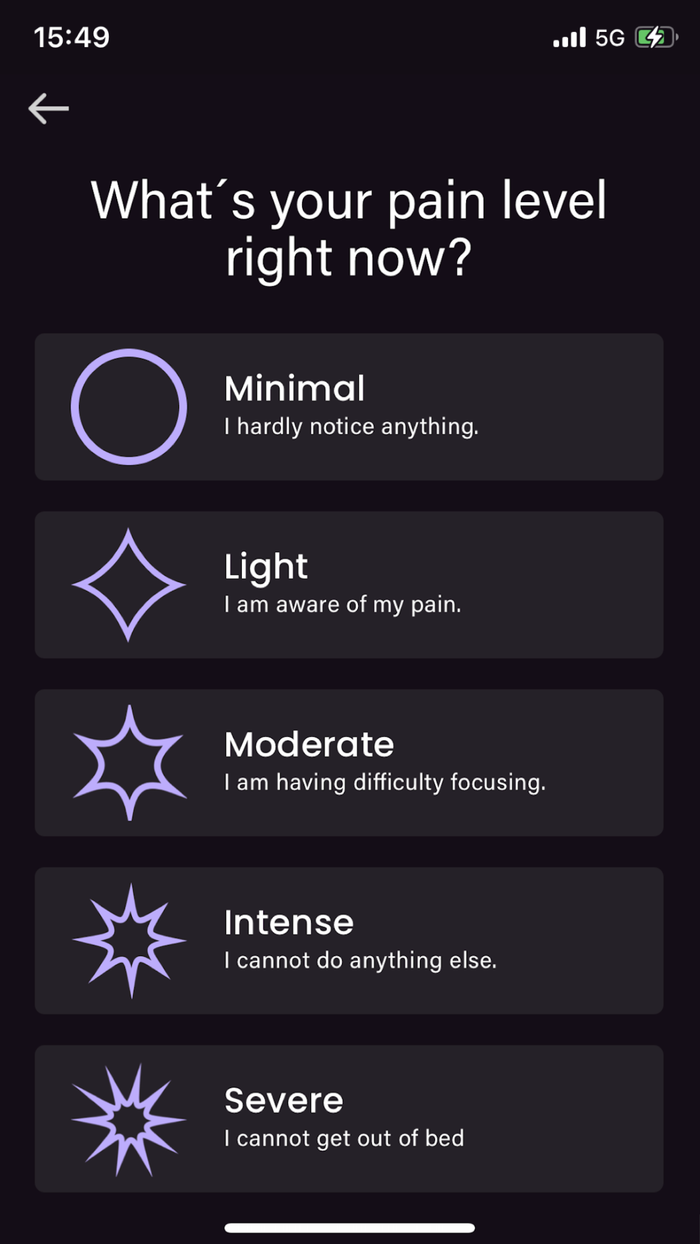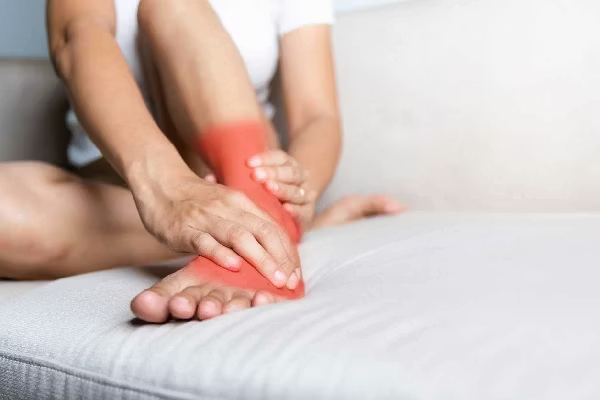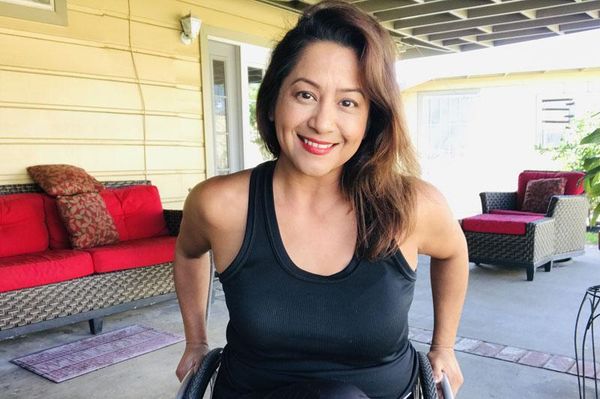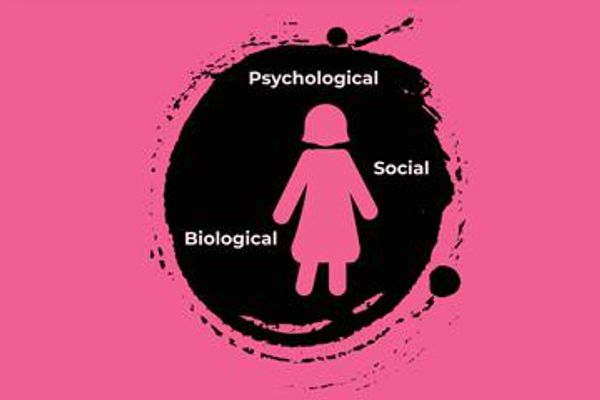Brittany Barreto, Ph.D., is a podcaster, an entrepreneur, and a molecular and human geneticist. (In other words, she’s really smart.) Read her column here each month to learn about what’s happening in the world of technology and innovation in women’s health.
For years I thought I had weak wrists. Sure, pushups and downward-facing dogs were inherently difficult, but the pain these exercises triggered in my wrists was disturbing. Eventually, the pain got worse and activities such as cooking, driving long distances and even certain sexual positions were becoming too painful to do. I began to seriously worry when my knees started to ache as well.
I went to an orthopedic specialist who sent me home, saying my joints looked fine. But just like many people who experience chronic pain, I knew something was wrong.
Lucky for me I was able to trace the pain to an intolerance to gluten. I’ve been wheat-free for eight months, and I feel stronger and healthier than I have in years. Some people say they could never give up bread. But if you’re one of the 1 in 5 people in the U.S. who lives with chronic pain, you can guess that I happily surrendered my cookies and pasta in order to be free from the constant pain.
Read: Learn More About Chronic Pain >>
Chronic pain is really common, especially in women, who make up 70% of people with chronic pain. And, thankfully, more companies are creating tools people can use to manage pain. Here are some of the newest technologies for chronic pain relief.
Lin — a brain-based approach
Lin, an online platform for chronic pain, is looking to redefine chronic pain from “all in your head” to “also in your head.” I remember I still winced when picking up a pot of water expecting an electric pain in my wrist for weeks after being gluten-free.
When we have pain for too long, our minds come to expect it through complicated interactions between the brain, nervous system and body. The Lin program educates users on patterns, habits and mindsets that could be making their pain worse, and teaches them how to break from this cycle to get relief.
This integrated digital health app has millions of users and incorporates psychology, neuroscience, pain reprocessing therapy, cognitive behavioral therapy, emotional awareness and expression therapy, and acceptance and commitment therapy.
Lin Health reports that 90% of members show reductions in pain within four to six months. What is not a pain for some members is the price tag since Lin is covered by some insurance providers in three states and accepts FSA/HSA payments.
Moonai — sounds that soothe

Photo/Courtesy of Moonai
Did you know that music has the power to reduce pain? The Moonai app uses ambient-drone soundscapes produced by musicians and scientists to naturally relieve menstrual pain. After answering a few questions, Moonai suggests a playlist of sounds. It may sound too good to be true, but Moonai says more than 80% of users report feeling less pain after listening to their customized playlist.
“We use binaural beats to convert the brain into a pain-free, relaxed state,” said Laura-June Clarke, the founder of Moonai. “Binaural beats are where the sound in the left and right ear are unbalanced. This influences the brainwaves. So depending on the frequency differences, we can induce relaxation or interrupt the pain signals in the brain.”
Clarke said another example is playing music at 60 beats per minute which relaxes heart rate and breathing. “The slower, deeper breaths lead to increased oxygenation and flow of blood. The obstruction of blood flow is what causes most menstrual cramps so if we can get your breath to slow down and veins to dilate, the end result is less painful periods.”
Stanza — an app as good as a pill

(Photo/Courtesy of Swing Therapeutics)
This digital therapeutic is a tech-based software that has been clinically proven to treat a medical condition successfully and has obtained FDA clearance. That means your healthcare provider can actually prescribe you an app!
Swing Therapeutics released Stanza in May 2023 as the first FDA-cleared digital therapeutic that treats fibromyalgia. The app provides a daily 15-minute lesson with simple and convenient exercises such as mindfulness and journaling that are proven to reduce pain caused by fibromyalgia. In fact, one study found that 9 out of 10 people said they prefer using Stanza to medications alone and that chronic pain relief was still effective a year after participating in the three-month program. Although Stanza is only currently available to be prescribed in Texas, Nevada and Pennsylvania, the company says more states will be coming soon.
Sword Health — physical therapy at home to predict, prevent and treat pain
Sword’s Digital Physical Therapy program brings clinical quality treatment into your home. Members wear sensors while following a physical therapist's customized plan. The sensors track, detect and correct movement errors in real-time. The physical therapist reviews data from the program and adjusts the exercises accordingly to optimize them for the level of effort, performance and difficulty of the exercise. This makes the program customizable rather than a one size fits all.
A recent study showed participants were twice as likely to complete their digital program than those that went to in-person physical therapy with equally strong clinical outcomes. Sword even showed that 50% of its members completed their prescribed programs on Christmas Day!
Movement is important for reducing pain but poor form can slow or reverse progress. You can say Sword has your back … and your front and all the joints in between when it comes to reducing pain.
The information about products and/or services in this column does not constitute any form of endorsement or recommendation by HealthyWomen. Links are provided as a convenience and for informational purposes only. This column may occasionally cover companies in which Brittany Barreto is an investor.
- Breaking Barriers to Pain Treatment ›
- Turning a Moment of Change Into Transformational Momentum for Chronic Pain Management ›
- Chronic Pain for Women Is Real ›
- Women and Chronic Pain: No, It's Not 'All in Your Head ... ›
- Why Women Need a Personalized Approach to Chronic Pain Management ›
- Facts About Digital Therapeutics - HealthyWomen ›
- The 411 on Femtech Questions - HealthyWomen ›
- How Chronic Pain Changes the Brain - HealthyWomen ›







